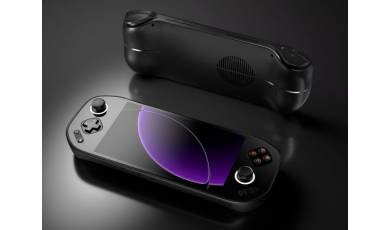Flash firmware on BLU Studio Selfie 3
Mobiles >> BLU >> BLU Studio Selfie 3| Specifications | Reviews | Secret codes |
| Unlock phone | Root phone |
| Backup | Flash Firmware | Screenshot |
How to flash BLU Studio Selfie 3?
Why reinstall the firmware?
Errors periodically appear in the Android operating system.
Some applications do not open, reinstalling which does not lead to a positive result.
Many programs from the Play Market do not start.
The phone restarts or shuts down randomly.
The phone began to work slowly.
You have decided to try a different version of Android.
Where can I find the firmware?
On the official website of the phone manufacturer.
On specialized services where users post custom or official OS.
What should be done before installing the firmware?
Create a backup copy of user data, contacts and photos and transfer it to your computer.
Insert your SD card into your phone. It must have enough memory to fit the firmware.
Find out the exact model of your smartphone.
Fully charge your phone battery.
Find and download the archive with Firmware.
Installing TWRP Recovery
Install the Official TWRP App from the Play Store on your phone.
When you start the application for the first time, you must agree to install a new firmware and all the risks associated with this, as well as agree to grant the application Superuser rights and click the 'OK' button.
On the next screen, select 'TWRP FLASH' and give the application root rights.

On the main screen of the application, click on the 'Select Device' drop-down list, and select your phone model.
After selecting a phone, the application will direct the user to a web page to download the modified recovery environment image file. Download the proposed *.img file.
When the file is loaded, you need to return to the main screen of the Official TWRP App and press the 'Select a file to flash' button. Select the file downloaded in the previous step.
Press the 'FLASH TO RECOVERY' button and confirm your choice.
When the message 'Flash Completed Succsessfuly!' appears on the screen. Click the 'OK' button. The TWRP installation procedure is now complete.
Copy the required files to the memory card. Using a PC or laptop card reader.
Insert a memory card into your phone.
To reboot into recovery, you need to use a special item in the Official TWRP App menu, accessible by pressing the button with three stripes in the upper left corner of the main screen of the application. Open the menu and select the 'Reboot' item, and then click on the 'REBOOT RECOVERY' button.
Firmware via TWRP

Before flashing, it is recommended to clear the 'Cache' and 'Data' sections. This will delete all user data from the device, but avoid a wide range of software errors and other problems. You must press 'WIPE' on the main screen.
Press the 'Install' button to start the flashing.

The file selection screen is displayed. At the very top is the 'Storage' button, select the location where the firmware file is located.
Select the storage to which the files were copied.

Select the firmware file and click on it. A screen opens with a warning about possible negative consequences, you need to check the item 'Zip signature verification', which will avoid using corrupted files when writing to the phone's memory sections.
The procedure for writing files to the phone's memory will begin, accompanied by logging and filling in the progress bar.
After completing the installation procedure, a 'Successful' message appears on the screen.
Summary: Camera Resolution: 8-megapixel; Camera flash: LED; Camera Features: Autofocus; Max Video Resolution: 1920 x 1080 px; Video frames per second: 30; Selfie Cam Resolution: 8-megapixel; Selfie flash: LED; Display size: 5 inches; Display dots per inch: 294 DPI; Color Mode: 16777216 colors; Multitouch: Yes; Touchscreen: Capacitive; Display Resolution: 1280 x 720 px; Displays superficy: 10.68 square inches; Displays superficy: 271.27 square mm; Display finish: Curved glass; Display total pixels: 921600; Operating System: Android 6.0 Marshmallow; Processor: MediaTek 6580; CPU Cores: 4; CPU architecture: 32-bit; Processor Speed: 1.3GHz; RAM: 1GB; Graphic Processor (GPU): Mali-4 ...
Comments, questions and answers on the flash firmware BLU Studio Selfie 3
Ask a question about BLU Studio Selfie 3




